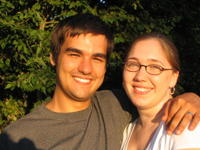Isaiah: Introduction
I want you to image for a minute that you live in Jerusalem. The year is 701BC and Hezekiah is king of Judah. He’s a good king who’s made sweeping religious and social reforms:
- He reopened the temple during the first month of his reign
- He purified it from the idolatrous practices his father Ahaz introduced
- He re-instituted Passover and possibly other feasts in the Levitical calendar
- He raised a lot of money for repairs to the temple and support of the Levites
- He was one of the most prolific and innovative builders in Judah’s history
- A huge empire about 500 miles northeast of Jerusalem (think upstate New York from Muncie)
- Known cruelty to captives
- Began really aggressive empire building in 745BC under Tiglath-Pileser III
- It was a yearly ritual for the armies to go out and conquer more territory every spring
- Devastated the northern kingdom of Israel in 721BC, deporting or killing almost everyone
- 704BC – Sennacherib becomes king of Asseria
- Hezekiah withholds tribute – an act of open defiance
- Assyria marches out, destroying Tyre (think Chicago from Muncie) first
- They work their way down to Lachish (think Indianapolis), destroying every fortified city in Judah on the way. Capturing Lachish would have cut off help from Egypt.
- At some point Hezekiah sends a bunch of gold and silver as tribute, but either it didn’t satisfy Sennacherib, or Hezekiah changed his mind and decided to trust the Lord instead.
- Hezekiah fixes the walls of Jerusalem and gathers the people, rallying them to trust the Lord
- Eventually Sennacherib surrounds Jerusalem, besieging it
Who was Isaiah son of Amoz?
- Long ministry during the reigns of Uzziah, Jotham, Ahaz, Hezekiah, and probably Manasseh: two good kings, a bad one, a really good one, and a really, really bad one.
- Probably married with at least two children
- Probably had a group of disciples, maybe a “school of the prophets” like Elijah
- Probably from an aristocratic background; seemed to have easy access to kings
- Jewish tradition has him sawn in half by Manasseh (see Heb 11)
- Ch. 1-5 would set the stage
- Then a flashback to the beginning: Isaiah’s call in ch. 6
- Ch. 6-39 tell all the backstory, getting us caught up to the scene at the beginning and finishing the story
- Ch. 40-66 would be a long, confusing-but-beautiful epilogue that would make much sense until the sequel comes out, but would introduce a new and enigmatic character and end on a hopeful, unfulfilling “To be continued…”
- Humbly and carefully
- Like someone doing shadow puppets with a flashlight, OT prophecy often has an immediate, concrete subject (like the hand) but is speaking poetically and typologically of something bigger (the shadow), which is God’s eternal kingdom.
- Because God’s kingdom touches this present age in many ways – Jesus’ life and death, the Church, my life and choices, etc. – it can often be applied in many different contexts (just look at how the NT writers used the OT).
- The Taylor Prism - a picture of the Assyrian account of the siege of Jerusalem in 701 BC.
- The text of this account - Sennacherib speaks (kings were known to inflate their accounts)


0 Comments:
Post a Comment
<< Home